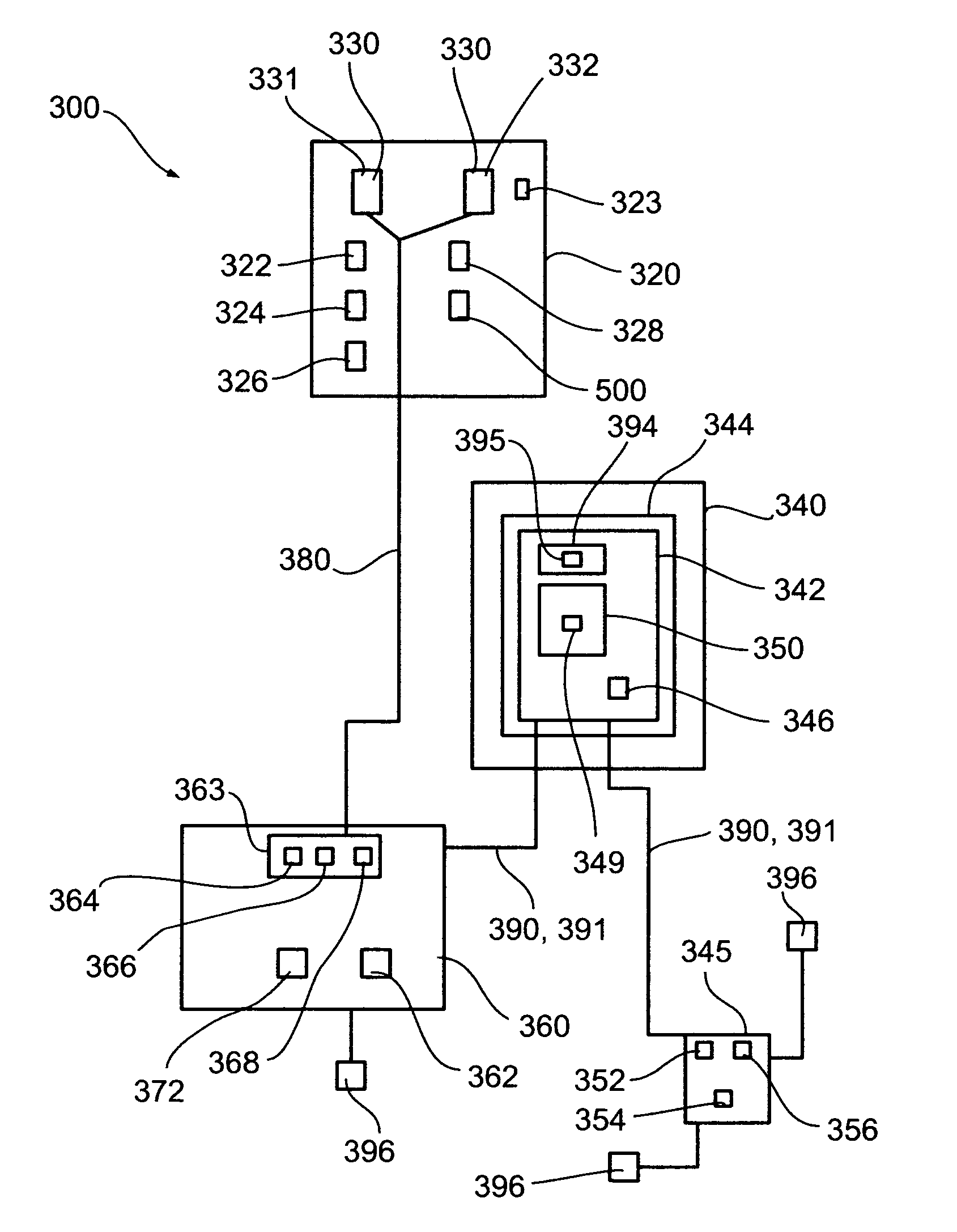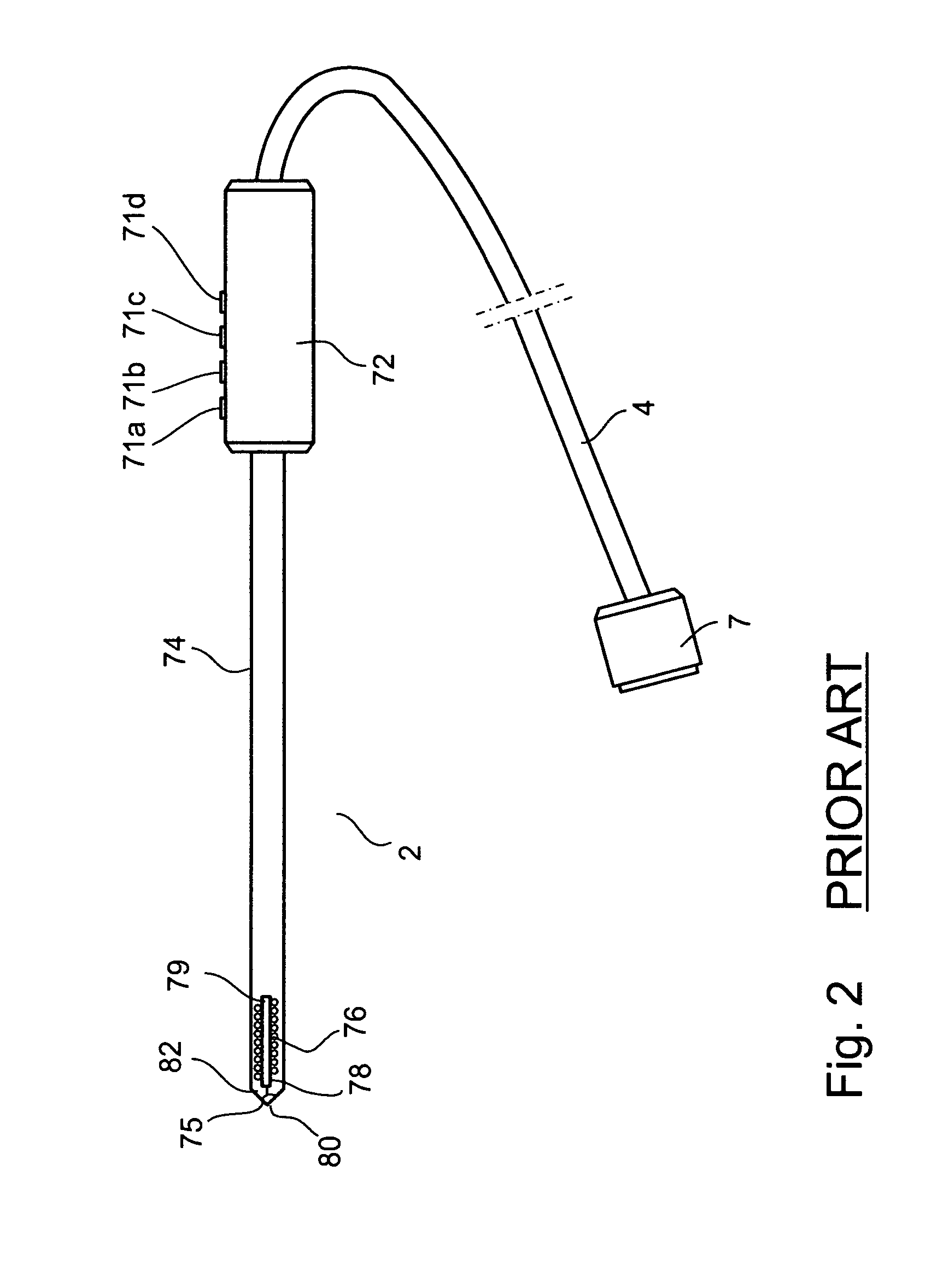Use of MRI in real time has major advantages for certain kinds of
surgery, yet presents unique problems relating to the compatibility of equipment used within MRI's powerful magnetic environment.
Use of
magnetic resonance imaging presents particular advantages for monitoring of cryosurgery procedures, yet existing systems for MRI-compatible cryosurgery have significant limitations and disadvantages.
It is a major limitation of existing
imaging modalities that they are unable to display to a surgeon the border separating those first and second volumes.
If he overestimates the extent of the ablation volume, he risks failing to destroy dangerous functional
pathological (e.g. malignant) tissue structures.
Lack of systems providing accurate information on the size and position of an actual
cryoablation volume is a major unsolved problem of contemporary cryoablation technique.
Currently known non-
MRI imaging modalities are not adjusted nor designed to directly image the size and position of an actual cryoablation volume.
MRI imaging is capable of detecting and displaying tissue temperatures, yet no MRI
system commercially available today is able to detect and display the borders of a cryoablation volume, because available MRI systems cannot detect and display temperatures within
frozen tissue.
Although MRI detection of temperatures within very cold temperature ranges appears to be theoretically possible, no MRI
system commercially available today provides this capability.
A plurality of synchronized
ultrasound probes directed towards the iceball from various surrounding positions would provide better information, but such a solution has been found to be impractical in some cases and impossible in other cases.
Thus, both
ultrasound and x-
ray technologies deliver only partial information concerning the size and position and three-dimensional shape of the iceball, and neither can deliver direct information concerning the size and position and three-dimensional shape of the cryoablation volume contained within the iceball boundaries.
A surgeon who is unable to observe or accurately estimate the size and shape of an ablation volume is forced systematically underestimate the size of the ablation volume, at least when dealing with malignant or possibly malignant tumors, because total destruction of the entire tumor is essential to treatment, lest potentially lethal live
cancer cells be left behind following
surgery.
He thereby avoids uncertainty about whether all portions of a
lesion (e.g., a malignant tumor) have been reliably destroyed, but unfortunately destroys considerable
healthy tissue along with the
lesion whose ablation is desired.
However, practice of cryosurgery under real-time MRI monitoring is difficult to accomplish.
Induced currents can lead to uncontrolled phenomena such as distorted data and / or distorted control signals.
A major
disadvantage of the configuration taught by Maytal is the described separation of control functions into inner and outer modules, which configuration provides user access to some control functions from within the inner module (e.g., control buttons selecting cooling or heating of cryoprobes), yet provides user access to other control functions from the outer module (e.g., manual control of gas valves,
user interface for viewing a display reporting cryosurgery system status, etc.) In practice, systems conforming to the teachings of Maytal required two operators of the cryosurgical equipment, a first operator being a surge on, positioned within the
magnetic field of the MRI equipment within an operating theatre environment, which first operator manipulates cryoprobes to perform the cryoablation, and a second operator who interacts with the
user interface of the outer module, whose function includes inputting gas control commands and reporting orally to the surgeon, providing ongoing reports on cryosurgery system status which the surgeon, from his position near the patient, cannot see for himself and cannot directly control.
Maytal'
s system thus suffers from a serious
disadvantage of inconvenience, in that it requires two operators, physically separated from one another, to operate the system, and in that the surgeon, in contact with a patient during the cryoablation does not have
direct control over a variety of aspects of the cryoablation procedure.
Maytal'
s system is further disadvantageous in that the separation of functions into two modules as described does not allow for combined or coordinated presentation of both of cryosurgery status data and of MRI
imaging data within a common display interface.
As stated above, currently available MRI systems do not provide direct information relating to size, position, and three-dimensional shape of the volume of total destruction (the ablation volume) created within an iceball during a cryoablation process.
Current MRI systems do not make recommendations to a surgeon during a cryoablation procedure, nor provide analyses specific to cryosurgical needs, nor do they automatically or partially automatically control the cryoablation procedure.
 Login to View More
Login to View More  Login to View More
Login to View More 


